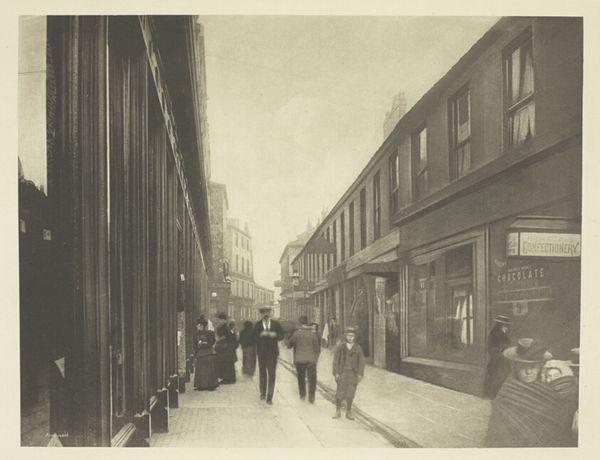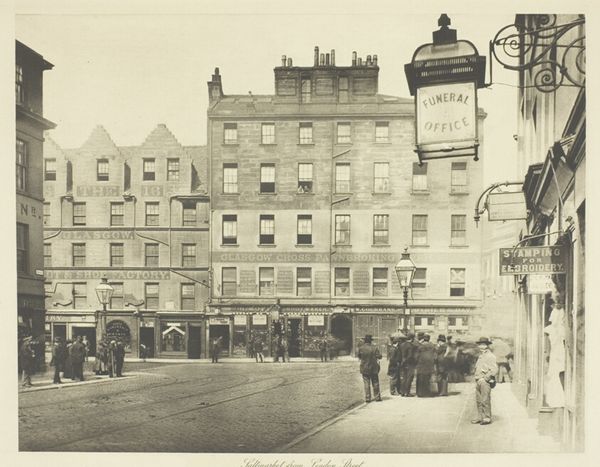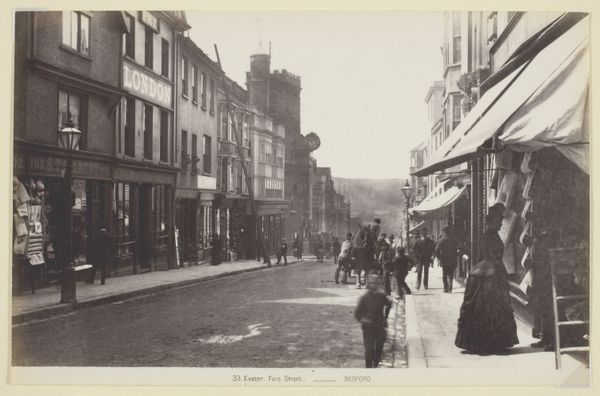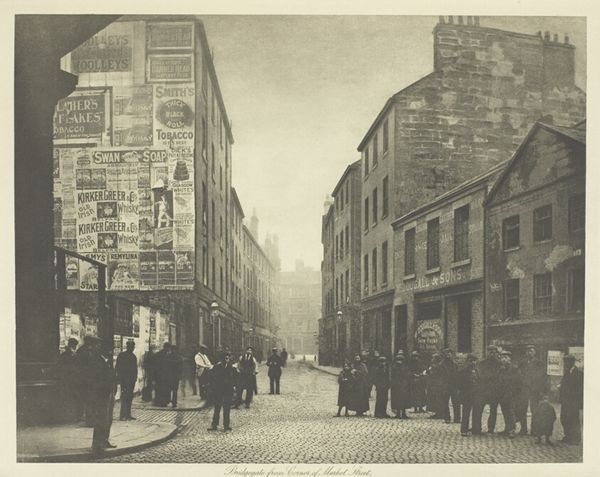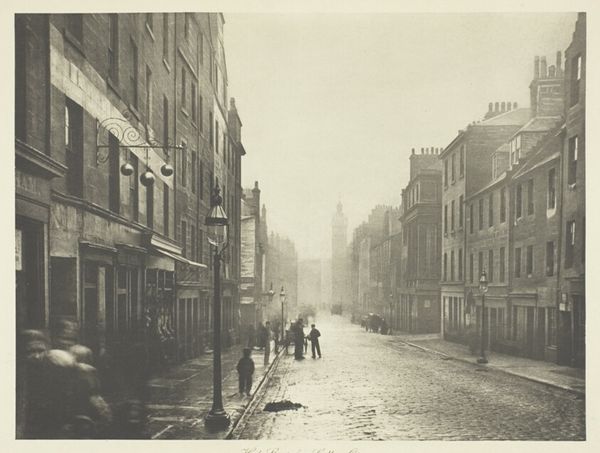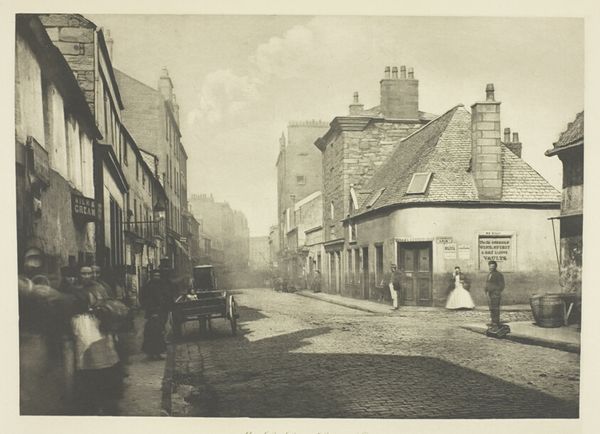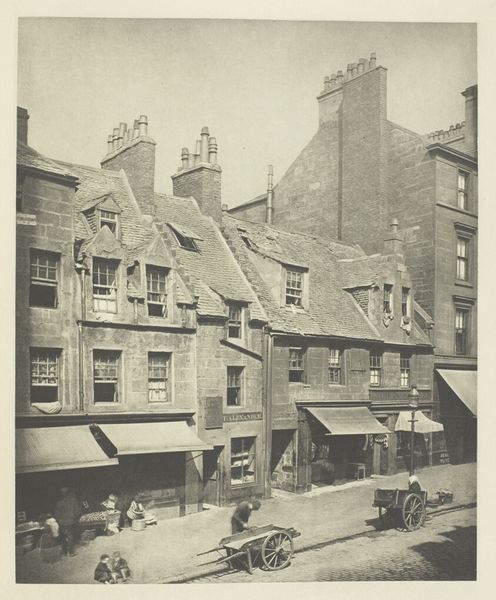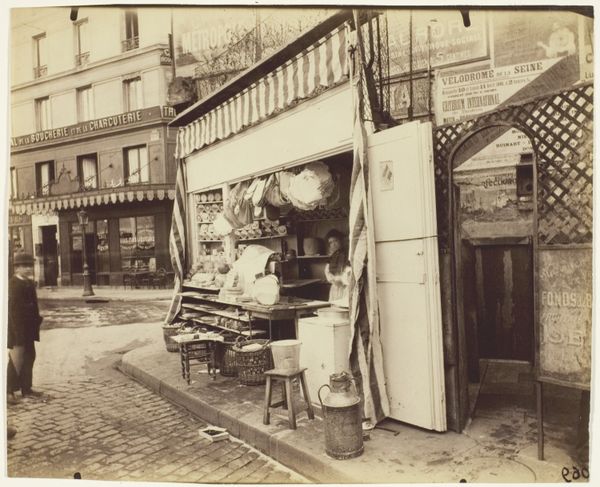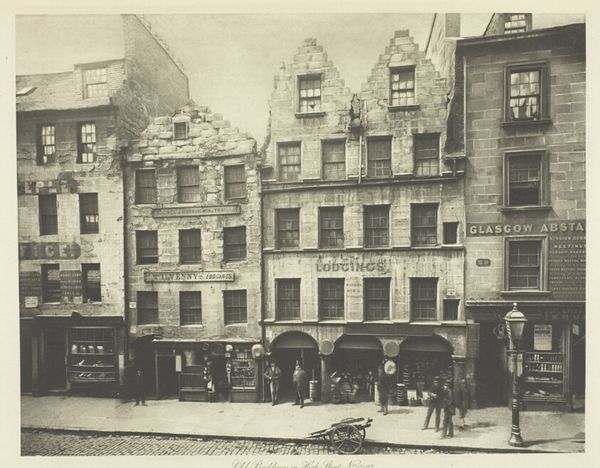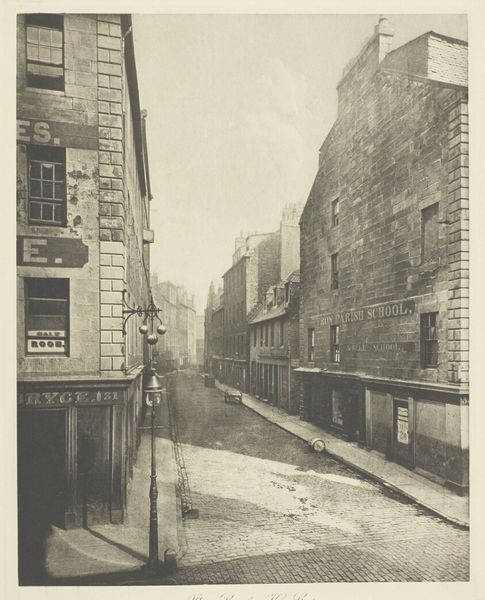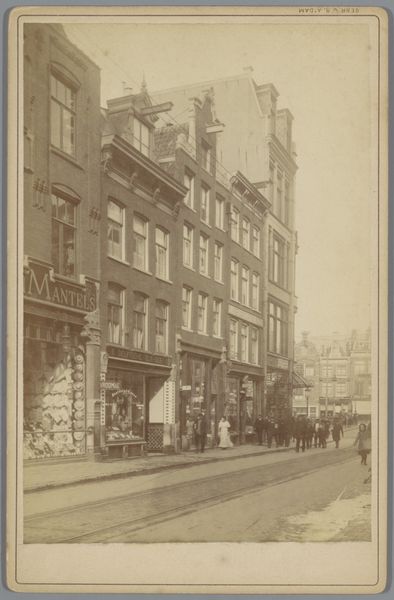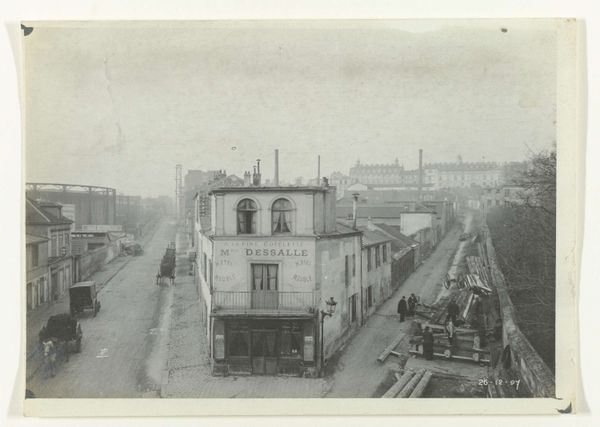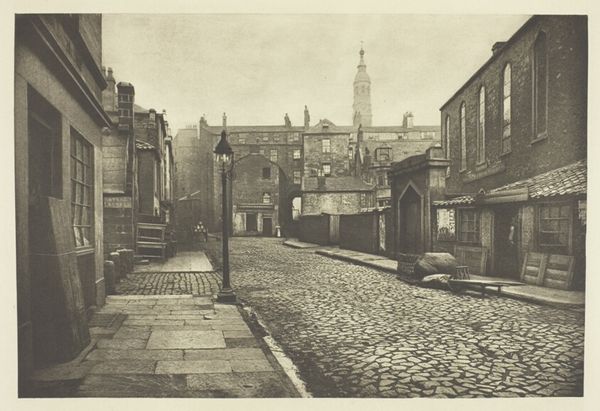
print, photography, albumen-print
#
16_19th-century
# print
#
landscape
#
social-realism
#
street-photography
#
photography
#
19th century
#
cityscape
#
albumen-print
#
realism
Dimensions: 18.4 × 24.2 cm (image); 28 × 37.7 cm (paper)
Copyright: Public Domain
Curator: This is "King Street, City," an albumen print made in 1868 by Thomas Annan. The Art Institute of Chicago holds this incredible example of social realism. What strikes you when you first look at it? Editor: It feels melancholic, doesn't it? Almost sepia-toned, even though it’s black and white, and everything seems a little damp. Like a quiet, ordinary morning you’d sleep through if you could. Curator: That feeling aligns with Annan’s wider documentary project. He wasn't just taking pretty pictures. He was commissioned to record areas of Glasgow slated for demolition, specifically to address public health crises and the restructuring of working-class neighborhoods. Editor: So it's a before-and-after snapshot, but with more…soul? It’s not just bricks and mortar; you get the sense of a lived space, all the rhythms of the place frozen. Did people kick back against all this slum clearance at the time? Curator: Absolutely. Many saw these clearances as a form of social engineering, displacing communities and disrupting established social networks. The image serves as a historical record, but also as a visual text for analyzing power dynamics within urban planning. Note how the wholesale merchants’ entrances contrast with more modest shops, underscoring inequalities. Editor: You see the ghost of capitalism at play even back then! And, from an aesthetic viewpoint, the eye is cleverly pulled into the distance with that converging perspective, but you're equally held by the details, those ghostly figures and that fantastic kerb-side clutter. Curator: Precisely. It speaks to how photography could serve simultaneously as a tool for social reform and artistic expression. Consider how these images were received then versus how we engage with them now. How does our understanding of urban development in the 21st century influence our interpretation of this photograph? Editor: Food for thought, that is for sure. It makes you think about what our cities will look like a hundred years from now, and what snapshots are being captured today that will reflect on our society. It’s haunting, yet strangely familiar, all at once. Curator: It truly encapsulates a crucial intersection of history, art, and social consciousness.
Comments
No comments
Be the first to comment and join the conversation on the ultimate creative platform.
